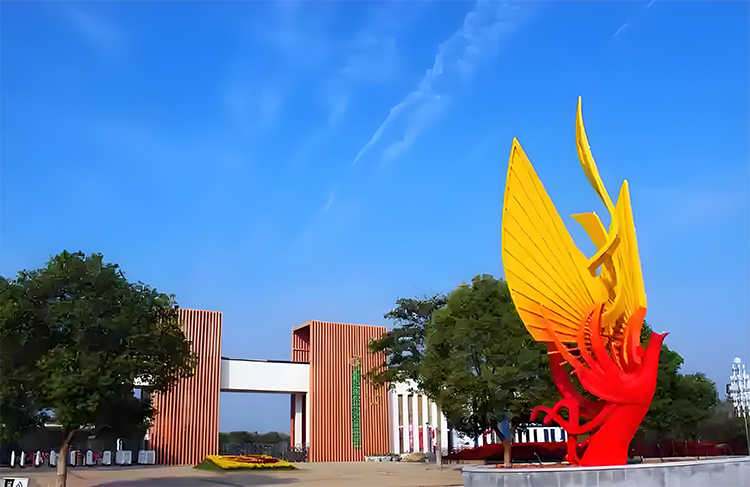Explore Phoenix Valley: Nanchang’s Floral Tea Countryside
Introduction
Hidden in Huangma Township on the outskirts of Nanchang is a carefully cultivated secret: Phoenix Valley. Not a temple-lined ancient street, but eight square kilometers of color—vast flower fields, misty tea hills, and wetlands where egrets dance. A national 4A scenic area honored as a “China Beautiful Countryside,” Phoenix Valley blends ecological agriculture, year-round floral displays, and tea culture into a sensory feast. Whether you are a photographer chasing blooms, a city dweller craving slow rural life, or a family wanting children to touch nature, this green sanctuary will quiet the noise of the city and restore poetic calm.
1. Four Seasons Flower Seas: Nature’s Palette
Phoenix Valley’s most enchanting feature is its ever-changing, never-ending flower show.
– Spring: Tens of thousands of rapeseed flowers create a golden sea; cherry blossom valleys scatter pink and white petals like snow—one of Jiangxi’s best spring outings.
– Summer: Lotus ponds stretch with emerald leaves, crape myrtle arbors blaze with color, and evening breezes carry a sweet floral scent.
– Autumn: Osmanthus and chrysanthemums vie for attention; and in winter, tea camellias bloom resiliently, brightening the southern chill.
Visitor tip: Early morning or after rain gives the softest light for flower viewing; drone footage reveals geometric patterns across the fields.
2. Tea Aroma Through the Ages: From Picking to Tasting
As Jiangxi’s largest tea expo garden, Phoenix Valley offers deep tea-culture immersion:
– Hands-on tea making: Strap on a bamboo basket and become a picker—learn the one-bud-one-leaf technique among rolling tea terraces, then try traditional pan-firing and rolling in the workshop.
– Tea aesthetics: At a lakeside tea pavilion, watch a tea master prepare the valley’s own White Dew tea (Bailu tea) in a Song-dynasty point-tea style, paired with local tea snacks for a meditative experience.
– Hidden delight: In autumn, join a fresh-osmanthus scenting workshop—layers of fresh osmanthus are pressed with tea leaves to create a unique souvenir to take home.
3. When Technology Meets Nature: Modern Farming Wonders
Phoenix Valley balances traditional farming with agricultural technology:
– Smart greenhouses: Soilless strawberries grow suspended in the air; giant pumpkins reach child-height, reshaping expectations of farm produce.
– Wetland ecology: Native forests and lakes create a natural oxygen bar where 30-plus bird species nest. The sight of egrets skimming the water is a favorite among photographers.
Family must-see: The education base features an “insect hotel” and a soil lab so kids can learn nature’s secrets through play.

4. Practical Guide: Unlocking Slow Countryside Life
Opening hours: Year-round 8:30–17:30 (flower seasons and holidays may extend hours)
Budget reference: Admission RMB 50; tea experience packages around RMB 120; meals RMB 30–80 per person (try steamed rice cakes and tea-oil fried free-range chicken).
Getting there:
– By car: About 1 hour from downtown Nanchang; on-site parking RMB 10/day.
– By bus: Direct Phoenix Valley tourist shuttle from Nanchang Station (about 1.5 hours).
Day vs. night: After crowds leave at dusk, flower fields under sunset and tea gardens beneath the stars take on a different charm—consider staying in a local homestay.
Local tips:
– Avoid weekend peaks; arrive early during cherry blossom season (March).
– A cycling greenway links core sights—rent a bike to cover more ground with less effort.

Conclusion
Phoenix Valley may lack thousand-year ruins, but its cyclical vitality embodies the Chinese pastoral romance of farming and learning. Here, a tea terrace, a single blossom, or a quiet wetland are living notes in the story of rural revitalization. If city life feels too fast, head to Nanchang’s backyard: let tea scents dress your clothes and floral fragrance fill your dreams.


